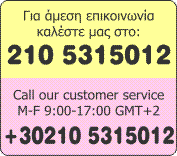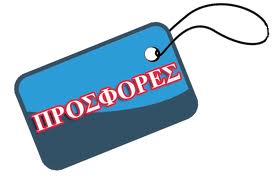 Seafood Processing (Επεξεργασία θαλασσινών - έκδοση στα αγγλικά)
Seafood Processing (Επεξεργασία θαλασσινών - έκδοση στα αγγλικά)
Seafood Processing
Technology, Quality and Safety
Συγγραφέας: Ioannis S. Boziaris
ISBN: 9781118346211
Σελίδες: 508
Σχήμα: 17 Χ 25
Εξώφυλλο: Σκληρό
Έτος έκδοσης: 2014
Part of the new IFST Advances in Food Science Series, Seafood Processing: Technology, Quality and Safety covers the whole range of current processes which are applied to seafood, as well as quality and safety aspects. The first part of the book (‘Processing Technologies’) covers primary processing, heating, chilling, freezing, irradiation, traditional preservation methods (salting, drying, smoking, fermentation, etc), frozen surimi and packaging. The subjects of waste management and sustainability issues of fish processing are also covered. In the second part (‘Quality and Safety Issues’), quality and safety analysis, fish and seafood authenticity and risk assessment are included.
The demand for fish and seafood has consistently increased in recent years, with fish protein being the major animal protein consumed in many parts of the world. Fish is a very perishable product, and the risk of contamination of fish products by chemical and biological hazards is very high. Processing is necessary to assure the prolonged shelf life and safety of fish and seafood. The fish processing industry has to face new challenges almost every day. Fish production must increase to meet demand, while fish products have to be transported over long distances. On the other hand, increasing demands from legislators and the consumer for better quality, safer and more ethical products have to be taken into account. To meet these criteria, seafood processing has to assimilate new advances in food science and technology and in quality and safety assurance. Current technologies are quickly being developed (e.g. Modified Atmosphere Packaging, Minimal Heat Processing, super-chilling of fish, etc.), while modern technologies such as High Pressure Processing are beginning to be applied to seafood processing.This book covers the whole range of current processes which are applied to seafood, as well as quality and safety aspects. The first part of the book ('Processing Technologies') covers primary processing, heating, chilling, freezing, irradiation, traditional preservation methods (salting, drying, smoking, fermentation, etc), frozen surimi and packaging. The subjects of waste management and sustainability issues of fish processing are also covered. In the second part ('Quality and Safety Issues'), quality and safety analysis, fish and seafood authenticity and risk assessment are included.This unique book is essential reading for companies, research institutions and university departments that want to keep informed about new and upcoming processes in the area of seafood processing quality and safety.About the editorIoannis S. Boziaris (MSc, PhD) is Assistant Professor in Seafood Hygiene and Preservation, since 2006, in the Department of Ichthyology and Aquatic Environment, School of Agricultural Sciences, University of Thessaly, Volos, Greece.
Contents
About the IFST Advances in Food Science Book Series xiii
List of Contributors xv
Preface xix
1 Introduction to Seafood Processing – Assuring Quality and Safety of Seafood 1
Ioannis S. Boziaris
1.1 Introduction 1
1.2 Seafood spoilage 2
1.3 Seafood hazards 2
1.4 Getting the optimum quality of the raw material 3
1.5 Seafood processing 4
1.6 Quality, safety and authenticity assurance 6
1.7 Future trends 6
References 7
Part I Processing Technologies 9
2 Shellfish Handling and Primary Processing 11
Yi-Cheng Su and Chengchu Liu
2.1 Introduction 11
2.2 Shellfish harvesting 13
2.3 Bivalve shellfish handling 18
2.4 Shellfish primary processing 21
2.5 Bivalve shellfish depuration 23
2.6 Shellfish labelling 27
2.7 Conclusion 27
Acknowledgements 28
References 28
3 Chilling and Freezing of Fish 33
Flemming Jessen, Jette Nielsen and Erling Larsen
3.1 Introduction 33
3.2 Post-mortem changes at chilled storage temperatures 34
3.3 Effect of freezing temperatures on quality-related processes 37
3.4 Fresh fish chain 41
3.5 Frozen fish chain 46
3.6 Legislation 54
3.7 Recommendations 54
References 55
4 Heat Processing of Fish 61
Dagbjørn Skipnes
4.1 Introduction 61
4.2 Basic principles 61
4.3 Best available technology for thermal processing of fish 62
4.4 Quality changes during heat treatment of fish 63
Acknowledgement 75
References 75
5 Irradiation of Fish and Seafood 83
Ioannis S. Arvanitoyannis and Persefoni Tserkezou
5.1 Introduction 83
5.2 Quality of irradiated fish and fishery products and shelf life extension 84
5.3 Microflora of irradiated fish and fishery products 101
5.4 Conclusions 120
References 120
6 Preservation of Fish by Curing 129
Sigurjon Arason, Minh Van Nguyen, Kristin A. Thorarinsdottir and Gudjon Thorkelsson
6.1 Introduction 129
6.2 Salting 130
6.3 Marinating 143
6.4 Smoking 146
References 151
7 Drying of Fish 161
Minh Van Nguyen, Sigurjon Arason and Trygve Magne Eikevik
7.1 Introduction 161
7.2 Principles of drying 161
7.3 Drying methods 163
7.4 Changes in fish muscle during drying 166
7.5 Packing and storage of dried fish products 169
References 170
8 Fish Fermentation 177
Somboon Tanasupawat and Wonnop Visessanguan
8.1 Definition of the term fermentation in food technology 177
8.2 Fermented foods worldwide 178
8.3 Lactic acid fermentation 179
8.4 Traditional salt/fish fermentation 180
8.5 Future trends in fish fermentation technology 197
References 199
9 Frozen Surimi and Surimi-based Products 209
Emiko Okazaki and Ikuo Kimura
9.1 Fish material for frozen surimi 209
9.2 Principles and process of frozen surimi production 209
9.3 Characteristics of fish material and manufacturing technology 219
9.4 Denaturation of fish protein by freezing and its prevention 223
9.5 Evaluation of surimi quality 228
9.6 Surimi-based products 231
9.7 Future prospective 232
References 233
10 Packaging of Fish and Fishery Products 237
Bert Noseda, An Vermeulen, Peter Ragaert and Frank Devlieghere
10.1 Introduction 237
10.2 MAP principles and importance for packaging fresh fish 238
10.3 Non-microbial effects of MAP 242
10.4 Effects of MAP on fish spoilage 243
10.5 Effects of MAP on the microbial safety of fish products 248
10.6 Application of MAP on fish and fishery products 250
10.7 Packaging materials and future developments 253
References 255
11 Fish Waste Management 263
Ioannis S. Arvanitoyannis and Persefoni Tserkezou
11.1 Introduction 263
11.2 Treatment methods 265
11.3 Uses of fish waste 291
11.4 Inputs and outputs in fisheries 296
References 304
Electronic Sources 309
12 Fish Processing Installations: Sustainable Operation 311
George M. Hall and Sevim K¨ose
12.1 Introduction 311
12.2 Assessment tools 313
12.3 Process operations 319
12.4 Production efficiency 333
12.5 On-board processing 334
12.6 Conclusions 338
References 339
13 Value-added Seafood 343
Michael Morrissey and Christina DeWitt
13.1 Introduction 343
13.2 Value-added product development 344
13.3 Market-driven 345
13.4 Values-driven 347
13.5 Health-driven 348
13.6 Resource-driven 350
13.7 Technology-driven 350
13.8 Conclusions 354
References 354
Part II Quality and Safety Issues 359
14 Seafood Quality Assessment 361
J¨org Oehlenschl¨ager
14.1 Why is quality assessment of aquatic animals multifarious and complex? 361
14.2 Fish composition 362
14.3 Fish freshness 365
14.4 Sensory methods 367
14.5 Chemical methods 370
14.6 Physical methods 374
14.7 Instrumental methods and automation 374
14.8 Imaging technologies and machine vision 380
14.9 Conclusion 380
References 381
15 Microbiological Examination of Seafood 387
Ioannis S. Boziaris and Foteini F. Parlapani
15.1 Introduction 387
15.2 Seafood microbiology 388
15.3 Microbiological parameters of seafood analysis 389
15.4 Microbiological analysis using conventional culture techniques 392
15.5 Microbiological examination using indirect rapid methods 399
15.6 Microscopy based rapid methods 401
15.7 Immuno-based techniques 402
15.8 Molecular methods for microbial determination 402
15.9 Conclusions 408
References 408
16 Fish and Seafood Authenticity – Species Identification 419
F´atima C. Lago, Mercedes Alonso, Juan M. Vieites and Montserrat Espi˜neira
16.1 Molecular techniques applied to seafood authentication 419
16.2 Molecular techniques based on protein analysis 423
16.3 Molecular techniques based on DNA analysis 430
References 440
17 Assuring Safety of Seafood – Risk Assessment 453
John Sumner, Catherine McLeod and Tom Ross
17.1 Introduction 453
17.2 Differentiating risk from hazard 454
17.3 Hazards, risks and food safety risk assessment 456
17.4 Hazard Identification/Risk Profile 458
17.5 Exposure assessment 459
17.6 Hazard Characterization 462
17.7 Risk Characterization 465
17.8 Qualitative Risk Assessment 466
17.9 Semi-quantitative Risk Assessment 466
17.10 Quantitative Risk Assessment 468
17.11 Reality check 468
17.12 Uncertainty and variability 469
17.13 Data gaps 470
17.14 Risk management approaches 470
17.15 Final thoughts 473
References 474
Index 479






